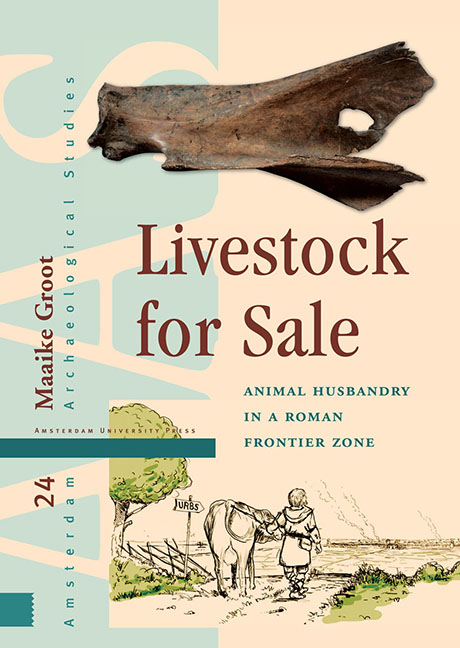Book contents
7 - Interaction Between Producers and Consumers
Published online by Cambridge University Press: 17 June 2021
Summary
The previous chapters have discussed producer and consumer sites separately; this chapter compares the results from both types of site. By comparing the data from rural and consumer sites, it is possible to investigate the hypothesis that most of the food was acquired locally. Furthermore, comparing the data will give insight into production strategies employed at the rural sites and relationships between producers and consumers. The layout of this chapter will be the same as that of the two previous chapters, looking first at species proportions and slaughter ages, then at skeletal elements, butchery methods and biometric data, and finally at archaeobotanical data. The chapter will end with a discussion and the most important conclusions with regard to developments in agriculture and food supply.
SPECIES PROPORTIONS
TOTALS PER PERIOD
For each period, total numbers of fragments for the four main domesticates for all rural and consumer sites have been compared. In all periods, cattle have a higher percentage in the consumer sites; this is most noticeable in the Middle Roman period (fig. 7.1). The percentage for sheep or goat is higher in the rural sites, especially in the Early Roman period. In this period, the percentage for pig is much higher in consumer sites. In the Middle Roman period, percentages for pig are almost equal, while in the Late Roman period, the percentage is much higher in the rural sites. The percentage of horse fragments is higher in rural sites in the Early and especially the Middle Roman period, but lower in the Late Roman period. The near absence of sheep in Nijmegen-Valkhof fits in well with the low proportions of sheep in Late Roman rural sites.
SHEEP / GOAT IN CONSUMER SITES
The two 1st-century watchtowers in Utrecht-Leidsche Rijn both show a high proportion of sheep or goat. This was not seen in other military sites. Perhaps this is related to the small number of troops stationed at the watchtowers. Supplying them with whole cattle or parts of cattle would be more than they could eat. It is more logical to supply joints of smaller livestock and beef taken off the bone. Indeed, evidence has been found for the supply of joints of meat.
- Type
- Chapter
- Information
- Livestock for SaleAnimal Husbandry in a Roman Frontier Zone, pp. 191 - 220Publisher: Amsterdam University PressPrint publication year: 2016



